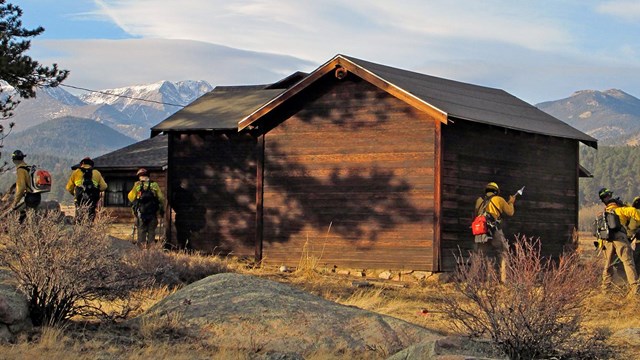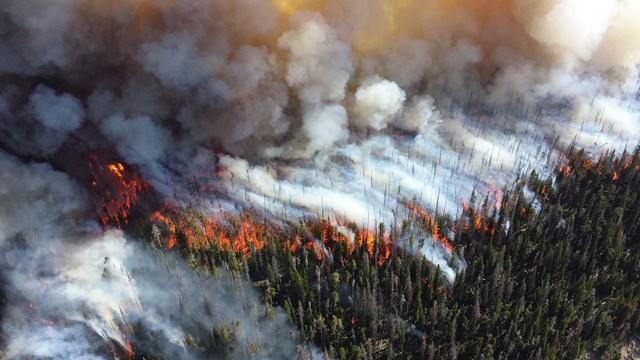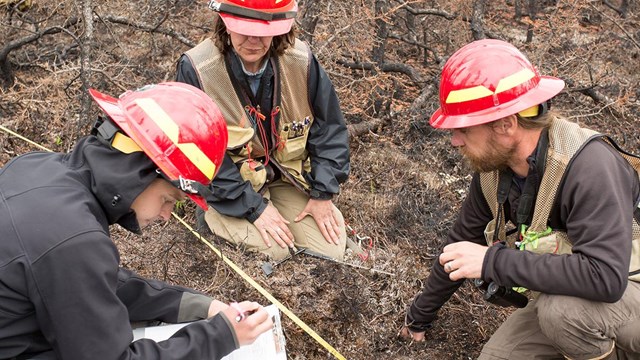The National Park Service's Wildland Fire Program protects the public, communities, and infrastructure; conserves natural and cultural resources; and restores and maintains ecological health. The Wildland Fire Strategic Plan identifies goals, objectives, and strategies to focus efforts to achieve this mission.
Fire is complex to manage, and fire personnel work with many different stakeholders regarding resources, planning, air quality/smoke management, and public access. Wildland fire has great potential to change park landscapes and does so more often than volcanoes, earthquakes, or even floods. In many ecosystems wildland fire is a critical natural process. In fire-dependent ecosystems, many plants and animals cannot survive without the cycles of fire to which they are adapted. If all fire is suppressed, fuel may build up, making hotter, more destructive fires inevitable.
Across the National Park Service, the role of fire is highly variable. Human actions have significantly changed some park ecosystems so that fire is no longer a natural part of them. These changes make park ecosystems potentially less resilient to the impacts of natural fire. They also may now include plants that are not adapted to fire at all.
Read the Wildland Fire Fact Sheet.
Organizationally, the NPS Wildland Fire Program is part of the Visitor and Resource Protection Associateship under the Division of Fire and Aviation Management and works closely with Structural Fire and Aviation programs.



